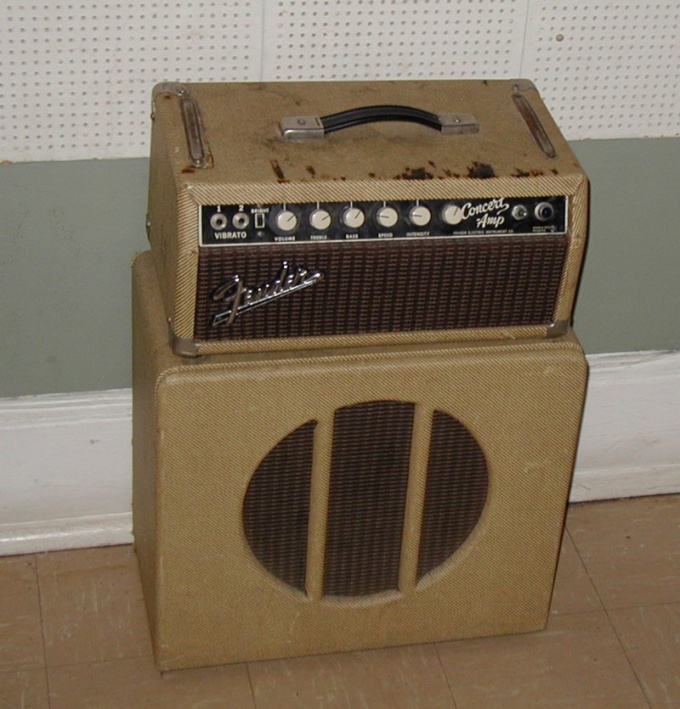You will need
- - power supply from an old tube receiver or radiograms;
- - electron tube and socket thereto;
- - variable resistance 220 ohms;
- - the input Jack;
- - mounting wire;
- - a piece of plywood with a thickness of 3-5 mm;
- - fine brass mesh or radiating;
- - output transformer from a vacuum tube receiver or TV
- - housing cover from the old CD or DVD drive;
- - an electric drill;
- jig - saw;
- - soldering iron, rosin, tin.
Instruction
1
Body cover mark and drill out the holes for the socket and for mounting the transformer TVZ or the like. Install the components on the lid of the chassis. In its lateral wall socket hook up input connector, variable resistor, which is the volume control of the amplifier. If the power supply is missing the switch and install it into the side wall. Try to make all of the mentioned elements were on one side of the chassis. If the items that you have, have the fasteners, make them the necessary holes.
2
3
On a separate wooden or plywood panels, secure the speakers, having cut holes for them. It can be 2 speakers of 1.5 W from the television or gramophone. Maybe 1 speaker 3-4 watts from a tube radio. Speakers can be of different shapes. You only need to provide a total power of not less than 3 W and the total resistance in a parallel inclusion of 3-8 Ohms.
4
If desired, protect the dynamics of fine brass mesh or radiomenu. If you use two parallel dynamics, they must be spaserovat. Pick up this integration, in which the diffusers will be drawn or pushed out simultaneously, the circuit to apply a constant current to a small voltage (e.g. from batteries)
5
Connect the power supply unit, amplifier and speakers so that the intensity apply an alternating voltage of 6.3 V. connect the DC plate voltage in the 210-300 V and negative connect to the body chassis. Connect to the output (low impedance) winding of the output transformer dynamics. Insert the lamp into the panel. Turn on the amplifier to the network. If it is assembled correctly, then after two or three minutes of warm-up it will be ready to work. If from the speakers you will hear a loud buzzing sound, then you need to reverse the wires connecting them to the output transformer.
6
Using a guitar cable to connect the amplifier with the electric guitar. Volume control of the amplifier gain the greatest power In the guitar sound.. the controller must be set on maximum volume. This amp typically does not require additional adjustments and settings.
Useful advice
Find a power supply that delivers a constant voltage 210-300 In AC filament at 6.3 V. These power supplies used in tube radios. It, like all the other parts for amplifier, you can buy at radio. Unless, of course, you will find them somewhere in the closet or in the garage.
You need a lamp or penlight 6П9 equivalent 6П15П.
Instead of the output transformer TVZ you can try to apply output transformer vertical deflection from a tube TV TVK.
When operating the amplifier as a guitar amp you need to keep in mind that when you turn the guitar consoles between instrument and amplifier sound output may increase dramatically. Therefore, the need to adjust from quiet to loud sounding.
If one power supply to connect two of such amplifier, it is possible to obtain high-quality computer speakers.
You need a lamp or penlight 6П9 equivalent 6П15П.
Instead of the output transformer TVZ you can try to apply output transformer vertical deflection from a tube TV TVK.
When operating the amplifier as a guitar amp you need to keep in mind that when you turn the guitar consoles between instrument and amplifier sound output may increase dramatically. Therefore, the need to adjust from quiet to loud sounding.
If one power supply to connect two of such amplifier, it is possible to obtain high-quality computer speakers.
